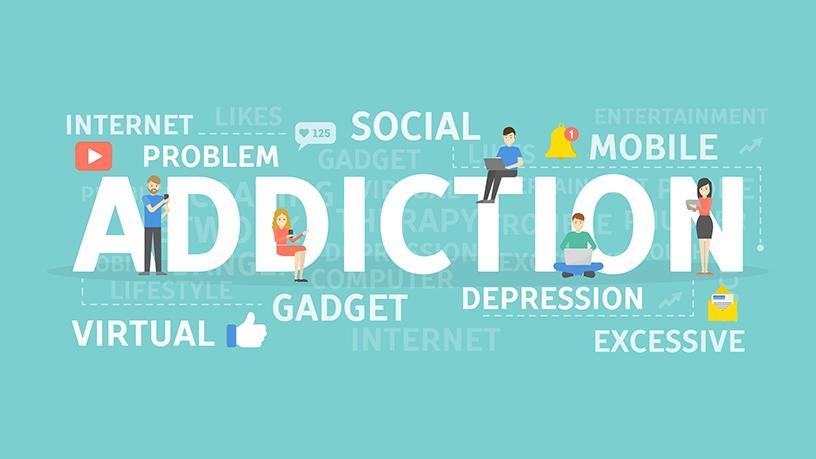Social media refers to all the applications and websites or blogs that enable people worldwide to connect. To become a member of social media, one has to create an account on the respective website to access content and social connections. This can be enabled via chats, share content, video calls, and other functionalities. Some widely used social media platforms are Facebook, Instagram, Snapchat, Twitter, and others.
Over the past two decades, social media has gained so much growth. Approximately 90% of millennials and GenX are a part of social media. We find ourselves losing time on social media platforms more often than ever. While it started to connect with friends and family, it has now evolved into a pleasurable pastime for all ages.
We do enjoy social media daily, but what if we are addicted to it? Here’s an essay about social media addiction.
The social media addiction essay outlines the cons of social media. It is increasingly unexceptional today, which can have serious repercussions on one’s physical and mental health.
One might use social media to connect with friends and family, watch videos or kill time. Like other behavioral addictions, using social media can have unpleasant and long-lasting consequences on your brain. You may use social media extensively and compulsively. However, it is normal for one to become so accustomed to scrolling through various kinds of posts that interfere with your daily life activities.

Why is Social media addicting?
While one can opt for social media to relax and have fun, it has its significant effects. Whenever one logs into their favorite social media account, the brain releases dopamine signals, which are neurotransmitters associated with pleasure. The brain, thus, identifies this activity as a fulfilling choice of life. So, people tend to visit social media quite often.
The positive vibes experienced during the use are just short-lived. As soon as this dopamine effect makes you feel good is reduced, one feels to visit back to make himself happy again.
Pitfalls of social media addiction:
The more engagement with social media, the more your brain will realize that this is a way to kill loneliness, not the actual case.
Low self-esteem: To get a perception that others are living a much greater life than yours. Curation of a perfect image might feel others inadequate.
Increase in isolation and loneliness: People tend not to indulge in social gatherings and visit eye-soothing and healthy places. This gives rise to loneliness, and hence, people use social media to get away from isolation.
Anxiety or depression: Studies have shown this is not a correlation but causation. One of the most significant differences in the youngsters’ lives, compared to earlier generations, is that they spend less time connecting with their peers in person and more time connecting electronically. This brings many situations in their lives due to which they tend to gradually lose their ignorance and innocence. In some cases, these give rise to anxiety and depression.
The onset of social anxiety disorder: Not meeting people or humans, in general, can lead to social anxiety disorder. It is also referred to as social phobia, an anxiety disorder that causes extreme fear in social settings. People have trouble talking to people, meeting, or attending social gatherings. They are afraid of being judged or scrutinized by others.
FOMO: Fear Of Missing Out is social anxiety stemming from the belief that others might have fun while having anxiety is not present. According to Jerry Bubrick, a clinical psychologist at the Child Mind Institute explains, “FOMO is really the fear of not being connected to our social world, and the need to feel connected, sometimes trumps whatever is going on in the actual situation we are in.”
Disrupted sleep patterns: Research shows that 60% percent of adolescents are looking at their phones in the last hour before sleep. Blue light from the electronic screens interferes with falling asleep. Also, social media is not necessarily a relaxing or sleep-inducing activity.
Poor work or academic performances: It is common for teenagers to engage with their friends on social media at the same time while studying. They take pride in multi-task, but it actually leads to cutting down learning and performance. The quick switching back and forth costs the brain. The concentration is disrupted, and thus, the work takes substantially more time to be solved.

Till now, you have got an idea from this essay about social media addiction. A mental health professional can truly determine whether you have social media addiction. Here are some of the points that remind whether you are addicted or not:
Negative effects on job or school work because of the overuse of social media.
Lesser activities like hanging out with friends or family.
Increased dependence on social media to cope with problems.
Restlessness or irritability while not using social media.
Feelings of rage when social media usage is reduced.
Here are some social media addiction solutions you might follow to ensure healthy use:
Focus on balance: Have offline social interaction, set up a time for activities, help build identity and confidence.
Turn off notifications: App developers try to engage their users even offline to keep them hooked on their application. Do not let them.
Looking out for odd choices to escape depression: This only complicates situations. Negative effects can have more impact when confidence is down.
The phone-free time before sleep: Enforce a plan of no smartphones before bedtime. You might use alarm clocks to wake up.
Key Takeaways:
Social media is becoming increasingly ubiquitous today, but it does not mean one can get addicted to it. Taking frequent breaks and setting boundaries can prevent inclining to social media every time to escape situations. Do not hesitate to reach out for professional help if you suspect you have a social media addiction.










